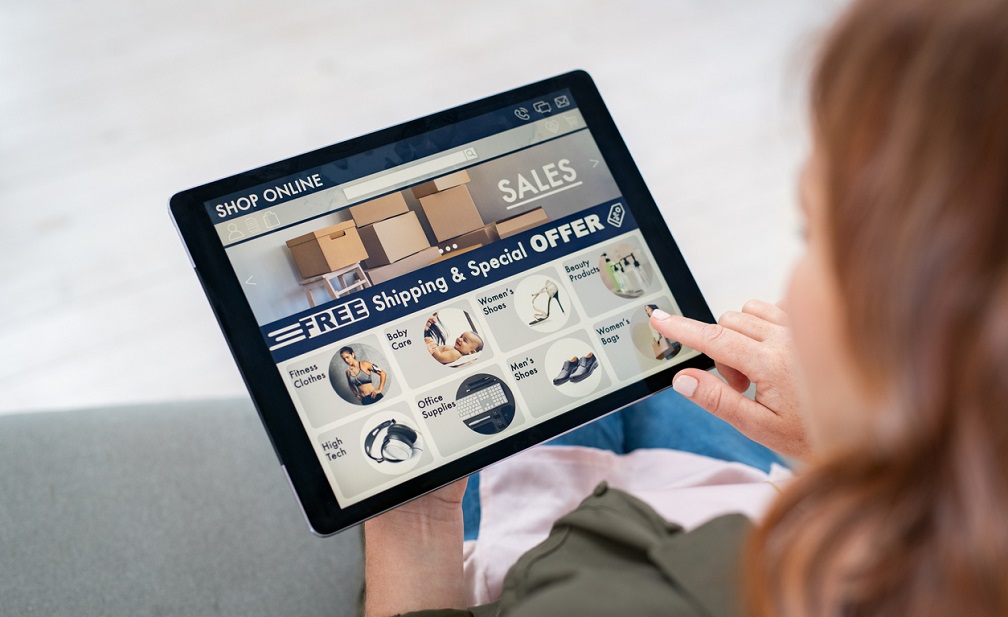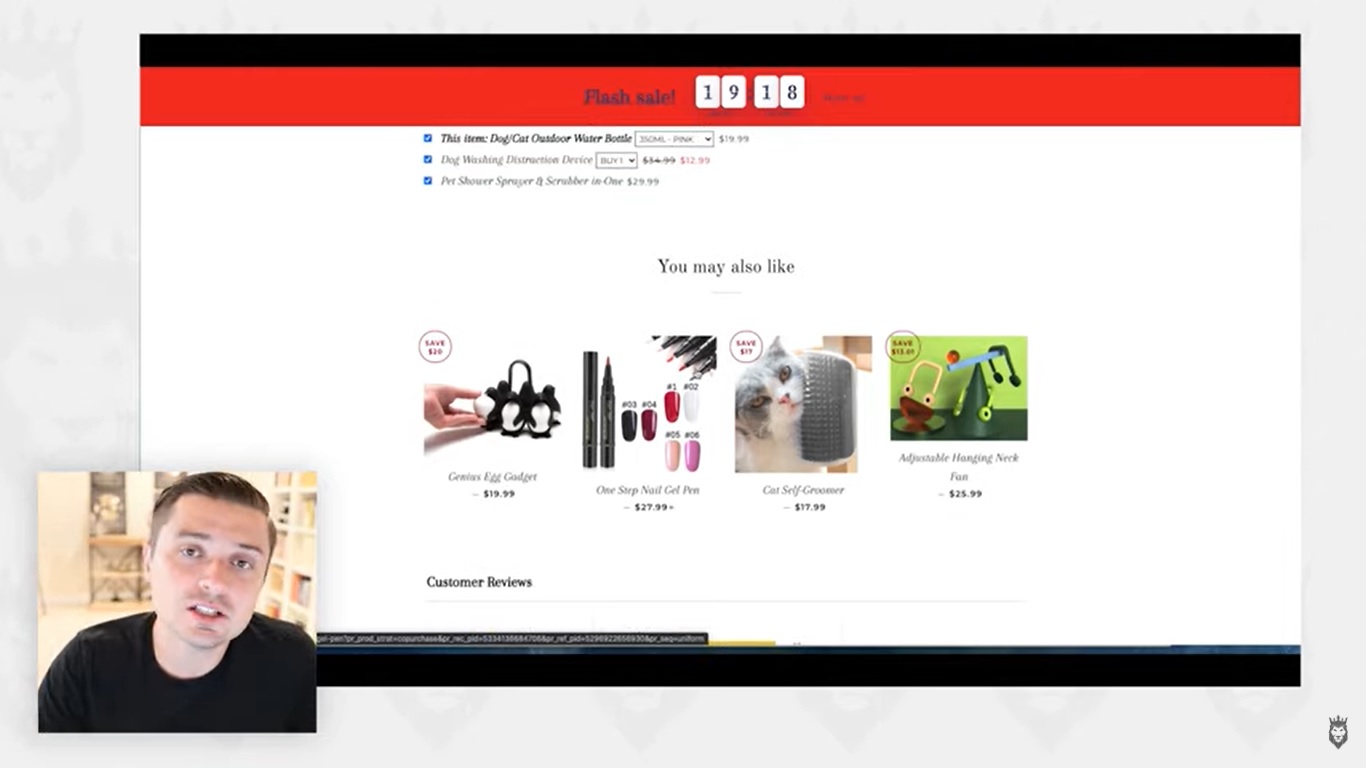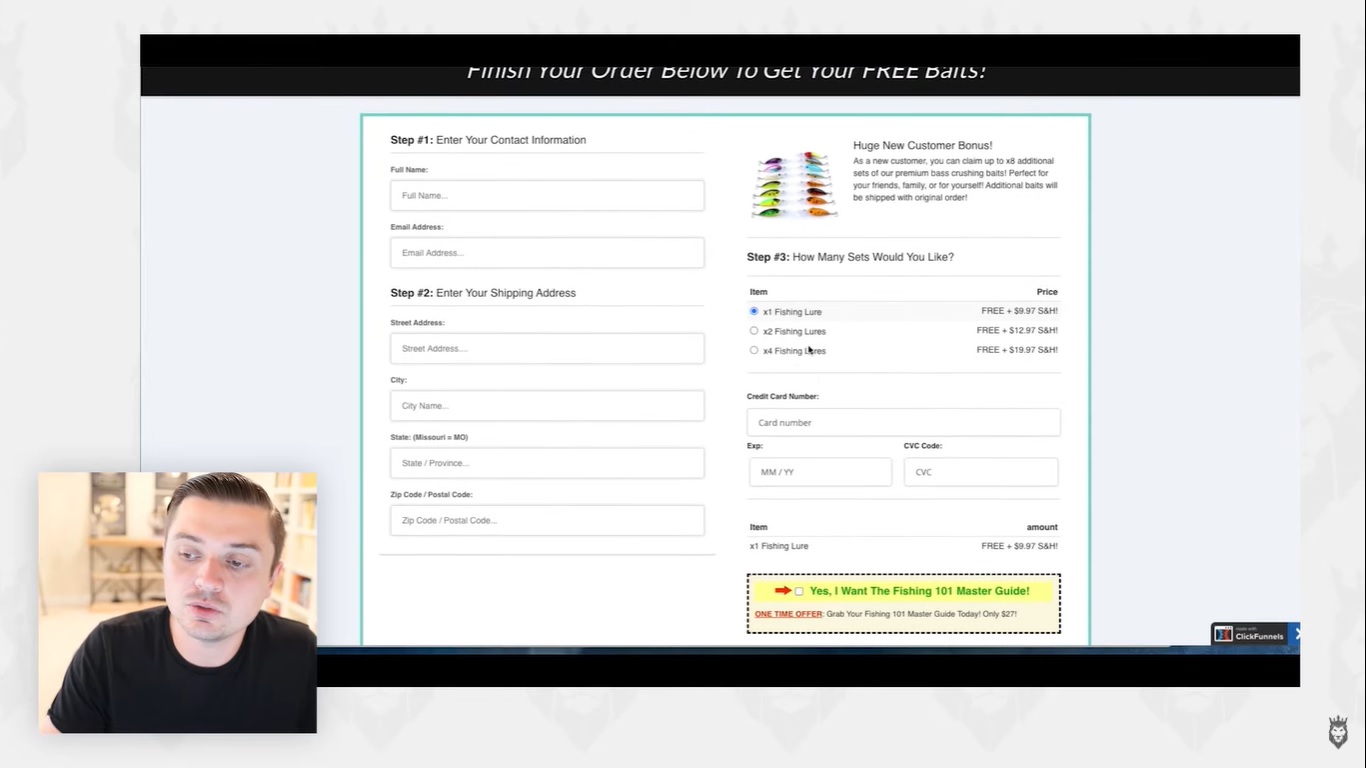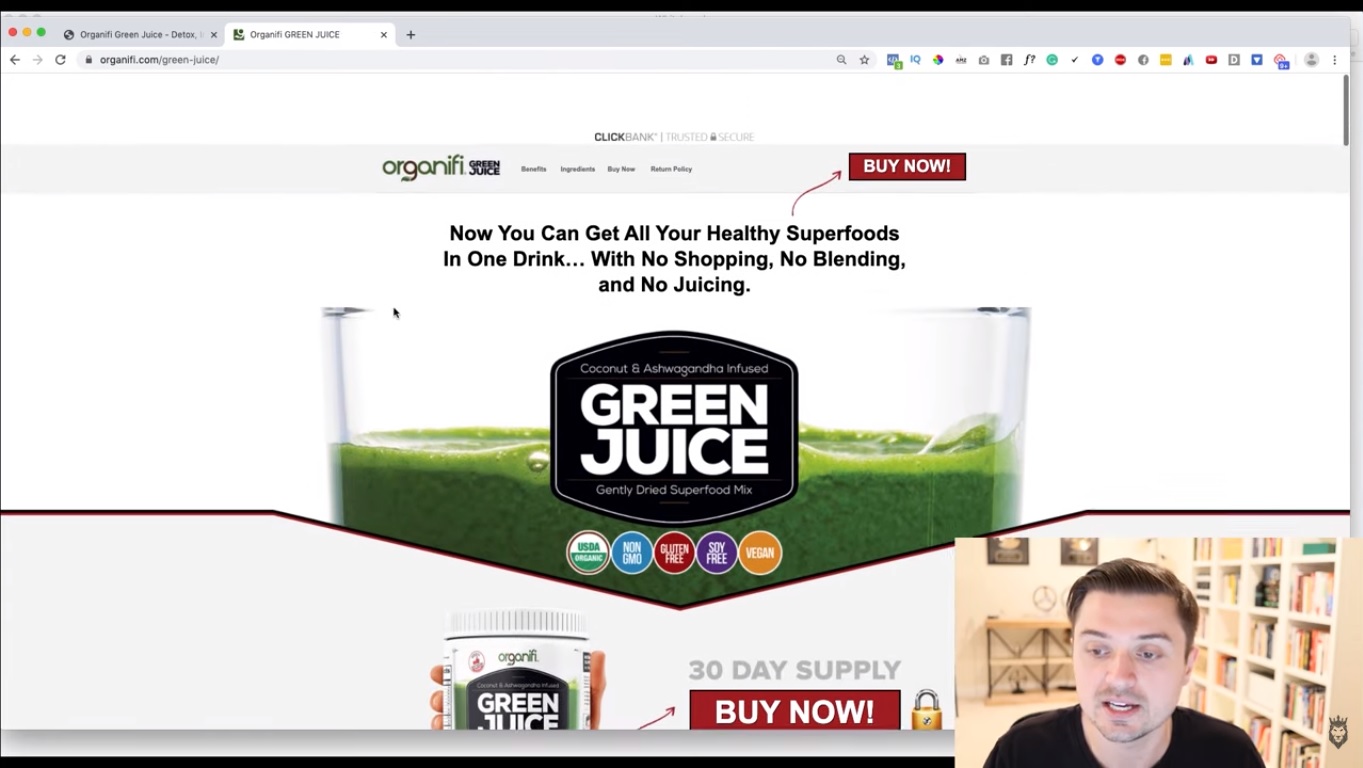If you’re looking for a winning strategy to implement in your dropshipping business, there are certain lessons to be learned from some of the giants in the ecommerce industry. Here we’re going to look at what a billion-dollar business did to excel and how you can some of these strategies to maximize LTV. Specifically, the business we’ll be examining is GoDaddy.
Some might question how a prominent brand in an unrelated business can help their dropshipping store excel. But the fact is that the principles behind these businesses are essentially the same as any company that sells online, whether a small single-product Shopify store or a corporate giant.
What GoDaddy Does Right
One of the reasons GoDaddy is a favorite example of an online business is the fact that they hit on every single note perfectly. Their process is exceptional when covering everything that they need to maximize LTV, including:
- Reoccurring purchases
- Order bumps
- Upsells
There isn’t a clearly identifiable weakness in GoDaddy’s strategy, and automatically upselling customers is how they stay profitable.
The biggest takeaway that we want for you to gain from GoDaddy is that they are willing to lose money to sell domains. The fact is that GoDaddy actually loses money with every domain sale they make. However, they make all of that money back in many ways, which we’ll cover here.
GoDaddy’s Winning Approach to Product Pages
Let’s use an example to illustrate what all GoDaddy does well. Searching for a domain like “empirestartsnow.com,” which is available, leads us to a product page telling us that this domain will cost us $11.99 for the first year.
From here, we can see their understanding of the sales process at work.
The Inclusion of a Smart Order Bump

Below the price on the page, GoDaddy includes an order bump. It offers a discount on the domain “empirestartsnow.us” for one dollar. GoDaddy knows that not a lot of people will be likely to follow through on that order bump. But they still have a chance of making a profit on at least one in every ten orders. The order bump further clarifies that the customer gets the domain for $1 for the first year if they sign on for a two-year subscription, and for the second year, they’ll pay $20.
This illustrates how GoDaddy has probably learned that the average customer stays with them for at least two years after buying a domain. If they can encourage the customer to stay with them, GoDaddy will profit in the long run and maximize the lifetime value (LTV) of that customer.
Pushing Additional Offers
In addition to the subtle order bump, GoDaddy’s page features another offer just below it. This second point encourages customers to purchase three additional domains (e.g., .NET, .ORG) for $19.99, saving them 69%.
Again, this may look like they’re basically throwing money away, and a majority of customers may not make these purchases. But GoDaddy is more likely to profit over a longer stretch than they would without these offers.
Giving Customers Even More Choices to Look Through
Below those offers, GoDaddy further encourages more purchases, and this is a great strategy for increasing the value of every sale. They do so by listing a bunch of other domains for sale. Some are as cheap as a few dollars, and others are as expensive as $21,000. These may not attract many additional sales, but all of these offers maximize LTV.
A Shopping Cart That Adds More Offers
Once we hit that “add to cart” button for “empirestartsnow.com,” we’re taken to a cart page that’s another example of top-notch design.
Utilizing Post-Purchase Upsells
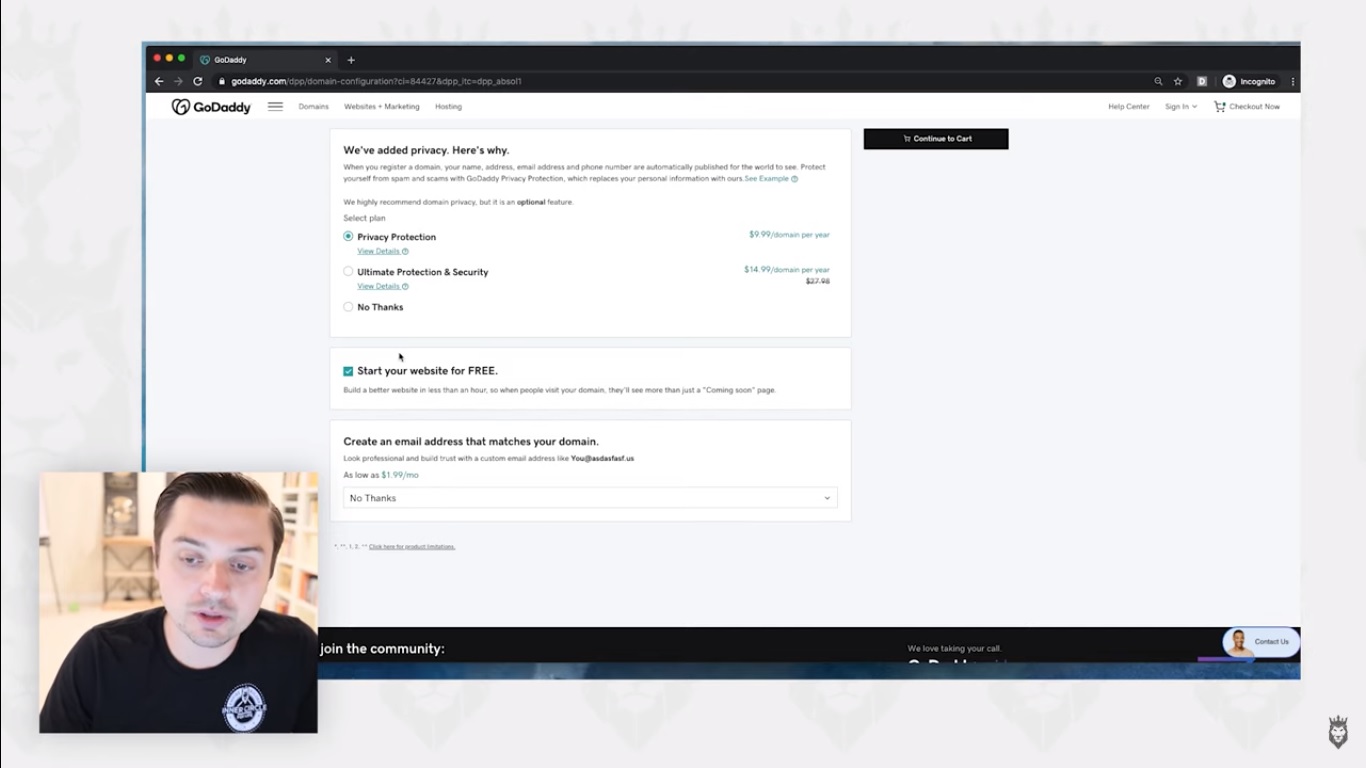
The page is rich with post-purchase upsells that perfectly complement those pre-purchase upsells on the product page. Those post-purchase upsells reward customers after they make a purchase, which further inspires them to buy the product.
These post-purchase upsells include privacy protection for $9.99 and a package that includes both privacy and security for $14.99. The first offer is automatically checked to highlight it. Below these offers, they have “Start your website for FREE” automatically checked, too. It offers the chance for customers to host their website for free right from GoDaddy. This latter offer can help keep customers loyal to GoDaddy and subsequently increase their chances of making repeat purchases.
Customers can also choose to create a support email that’s connected to the domain.
A Highly Profitable Checkout Page
After selecting the various offers on that shopping cart page, customers are then taken to the shopping cart page to finalize their purchase.
Here, customers may be thrown off by the final price at the top. Instead of the $11.99 price advertised for “empirestartsnow.com,” the price now says $21.99. But the page is quick to clarify that this is the price for two years. Customers must choose “1 year” from the dropdown below if they want that initial price.
They also offer a quantity break with a small discount if customers choose to buy the domain for three years or longer. This illustrates how important it is to offer quantity break discounts at the point of sale (POS) to maximize LTV and profits. This is a practice we always encourage if you want to boost sales significantly.
At the same time, the rest of the page is very simple and neat. It encourages the customer to follow through on their purchase without simply abandoning the cart.
We’d like to take note of how GoDaddy makes use of that auto-select of the two-year option. This is something we practice at Ecommerce Empire Builders. We also encourage the use of best-seller highlights and quantity break discounts on our order forms. Implementing this strategy here alone can make a customer worth more than a day’s worth of ad spend.
Below these quantity break discounts, GoDaddy also includes an order bump to easily add domain privacy for $5.99 per year with one click.
Use GoDaddy’s Strategies to Your Advantage to Maximize LTV

As you can see, GoDaddy certainly seems to know what it’s doing to attract customers and maximize profits. While GoDaddy might lose money with domain sales, all of these pre- and post-purchase upsells, along with other order bumps and quantity break discounts, go a long way in helping GoDaddy remain on top of its game. Applying these strategies to your dropshipping business can be invaluable in helping you grow and maximize LTV.
To find out more about how to build a leading dropshipping business, check out our free Ecommerce Empire Builders Master Class. This webinar will show you how to create a dropshipping business with ease and maximize profits like GoDaddy and other billion-dollar companies.
